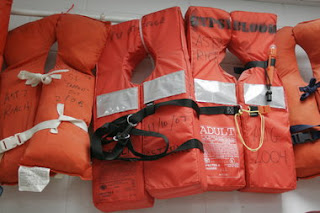“To the end of her long life this woman wore a
velvet ribbon at her neck, fastened with a golden pin. That’s how close Lytle
was to the Civil War. Close enough to reach up as a child, passing into sleep,
and fondle the clasp of that pin.”
That was my favorite passage from John Jeremiah
Sullivan’s “Mister Lytle: An Essay.” It evokes a vivid image of literally reaching across time, a salient subject
in a tale of an older artist and his protégé. Throughout, Sullivan does an
excellent job of establishing Lytle as a relic, with his “extinct” accent and “extraterrestrial”
body. (Describing the artist’s writing as “brilliantly senile” was another
particularly strong turn of phrase, I think.) Something about this essay really
gripped me; the theme of mortality, perhaps, but also the bits of writing
wisdom sprinkled throughout.
Here are a few of the lines that most intrigued
me, and my accompanying thoughts:
- “He told
me I was a writer but that I had no idea what I was doing. ‘This is where the
older artist comes in.’” (and later) “I tried to apply his criticisms, but they
were sophisticated to a degree my efforts couldn’t repay. He was trying to show
me how to solve problems I hadn’t learned existed.”
For me, this reinforces the idea of writing as a
craft—something that is studied and honed over a lifetime. At the same time,
there is an interesting conflict between these two passages. Though Lytle
offers himself up as the knowledgeable “older artist,” he consequently confuses
Sullivan by totally going over his head with his suggestions.
So, what aspects of writing are truly teachable,
and which ones must be individually “discovered” as one’s craft develops? Seeing
as I’m not a TA, I haven’t really had to ponder this subject. Instinctively, I’d
say that “hard” rules like grammar and spelling are teachable, while personal style
and voice are something an individual develops over time. (And of course, one’s
style or voice might involve breaking the rules of grammar and spelling. I’m
inclined to think you should know the rules before you break them, though.)
- “What he
could still do, in his weakness, I couldn’t do.”
This possibly just resonated with me because I
have so many aging relatives, but I thought that this line had a beautiful,
poignant ring to it. I felt the same way about this selection: “I used to walk
by his wedding picture, which hung next to the cupboard—the high forehead, the
square jaw, the jug ears—and think, as I passed it, ‘If you wanted to contend
with him, you’d have to contend with that
man.’ Otherwise it was cheating.”
These passages really highlighted the
differences between these two men—one at the beginning of his life and career,
the other at the end of his own.
- “He
wrote about the Muse, how she tests us when we’re young.”
OK, so this line really fascinated me . . . Can
anyone guess what Lytle might have meant by this? I’ve heard other writers talk
about their muses, but I can’t say that I have some particular figure in mind
that inspires me to write. How are young artists “tested”?
- “His toenails were of horn.” (and) “He knew
how to adjust his formality by tenths of a degree, to let you know where you
stood.”
Just awesome. Sullivan has a knack for choosing
pitch-perfect descriptions.
The biggest disappointment for me in this piece
was that, at the end, I felt that knowing so little of the Agrarian movement really
cheated me out of Lytle’s intricacies. It was like having a certain pigment
absent from a portrait; I got a rich-enough sense of who Lytle was, but there
was still something important missing. Maybe that’s just a Critical Reader
Failure on my part, as I wouldn’t say that it was Sullivan’s job to explain the
Agrarian movement to me—particularly when you consider the venue for this
piece. It's a subject that I'll definitely have to read up on in the future.
***
As a side note . . . Looking at this trio of profiles, I found that they
also offered a glimpse into the
interviewer’s writing life. The questions the writers ask and the subjects
they focus upon often offer insight into their own processes, even as they are
profiling others.
Schenkar is preoccupied with voice, for example,
while Roiphe discusses her habit of not writing down location details when she’s
interviewing.
Hope that makes sense. I was just intrigued by the way that the interviewers' characters colored these profiles.




